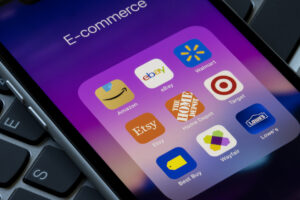The Scoop: DeepSeek raises red flags for OpenAI, U.S. Navy
Plus: ‘New media’ will have special seats in White House Briefing Room; DEI retreat muddles Target Foundation’s role.

DeepSeek, the unexpectedly powerful Chinese AI tool, turned American stock markets on their head earlier this week. The open-source model was reportedly produced faster and with less computing power than thought possible. The free tool quickly shot to the top of the app charts in the U.S. and raised questions about whether or not America would win the AI race.
But already, questions are gathering about how DeepSeek was made and how safe it is for use.
OpenAI is investigating whether or not DeepSeek used data from ChatGPT to create the LLM. The Wall Street Journal reported that several attempts were made by accounts based in China to “distill” ChatGPT – that is, to take data from the blockbuster AI tool to train its own models. While it isn’t clear that DeepSeek was one of the entities which attempted this distillation, the investigation is ongoing. However, some screenshots appear to show DeepSeek surfacing content that references ChatGPT’s policies – an odd thing for a competing AI model with no connection to offer up.
If large parts of DeepSeek were indeed lifted from ChatGPT, it would make the speed and ease of the product’s development less impressive and give the advantage back to the slower, more cumbersome but original American models.
But either way, the app’s Chinese origin is raising concerns with many American institutions about data safety and security. The U.S. Navy sent a stern warning to sailors not to use DeepSeek for either work or personal use. An email said it was “imperative” for “potential security and ethical concerns associated with the model’s origin and usage.”
Why it matters: The success or failure of DeepSeek will have massive impacts on the future of chip processing manufacturers, major tech companies and the brewing cold war between China and the U.S. But for communicators, there are a different set of considerations.
Data privacy and security has always been a primary concern in any professional or enterprise-level use of AI tools. While paid accounts with providers like Copilot and ChatGPT promise to protect data, things get murkier when a company is based out of China and entangled with the ruling Chinese Communist Party. As we’ve seen with TikTok, any technology based in that nation plays by a different set of rules. Not only may the infrastructure be stolen from U.S. companies, the way data is shared with the CCP should raise huge red flags for any professional considering AI tools.
Normally it’s great to get hands on with new tools (albeit in a safe, controlled environment that protects sensitive data). But in this case, caution is needed. Before experimenting with DeepSeek, ensure you’ve consulted with IT, legal and thought very carefully about what data you provide. The Navy indicates that even personal use could yield risks, so proceed with caution.
Editor’s Top Reads:
- The first White House press briefing of the new administration has already brought big changes and an increased emphasis on “new media.” A chair next to the press secretary’s podium will now be reserved for podcasters, influencers and other content creators who might not qualify for membership in the White House Correspondents’ Association, which determines seating in the rest of the room. “It’s essential to our team that we share President Trump’s message everywhere and adapt our White House to the new media landscape in 2025,” said Press Secretary Karoline Leavitt. On one level, it’s not surprising to see the Trump administration continue to lean into the independent media who helped them win the White House. On the other, having a seat next to the press secretary’s podium, assigned by the administration, creates a less independent perception and relationship. We’ll see what kinds of outlets wind up sitting in that chair, but it’s an undeniable vote of confidence that new media is here to stay and must be treated every bit as seriously as the old guard – albeit with perhaps a few new twists in the relationship.
- The Target corporation announced that it would roll back its DEI efforts. But that leaves substantial questions about the fate of the Target Foundation, the company’s philanthropic arm that distributed $384 million in cash and products in 2024. Unlike the company itself, the Target Foundation still lists “racial equity” as a core value on its website – a statement that resonates in Target’s hometown of Minneapolis, the city in which George Floyd was murdered by police officers. A spokesperson told the Associated Press that the “recent update does not impact Target Foundation giving.” However, this will quickly prove confusing for both philanthropic partners and the general public. The foundation is connected in both name and function to its parent company. Trying to explain that the two hold different values will make everyone unhappy – as was exemplified when Twin Cities Pride rejected Target’s usual gift to its celebrations. As companies continue to make changes to DEI policies – or walk away altogether – ensure that foundations and other tangential aspects of the business have communications plans in place as well. A lack of unity will undermine all messaging.
- As part of its ongoing push to bring customers back to Starbucks stores, the coffee giant is cutting 30% of its menu in a bid to make selecting a beverage less overwhelming. But most notably for our purposes, one reason for the cut is to allow space for the menu to be able to respond to “cultural moments” (read: viral trends) that can bring customers into stores. Think of the viral Dubai matcha that took the internet by storm last year. Social listening can lead to products that can not only drive revenue but media attention, which in turn can drive more revenue. Communications can be at the vanguard of these efforts. How can you adapt these strategies for your organization?
Allison Carter is editorial director of PR Daily and Ragan.com. Follow her on LinkedIn.







